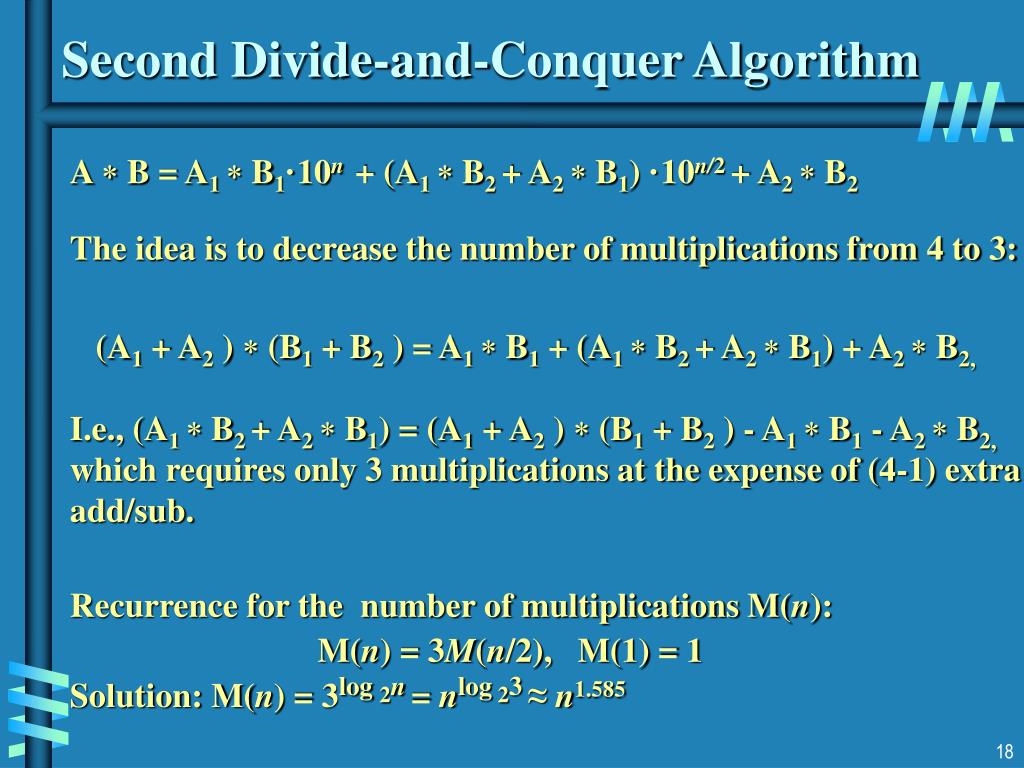

Therefore, some authors consider that the name "divide and conquer" should be used only when each problem may generate two or more subproblems. Under this broad definition, however, every algorithm that uses recursion or loops could be regarded as a "divide-and-conquer algorithm". These algorithms can be implemented more efficiently than general divide-and-conquer algorithms in particular, if they use tail recursion, they can be converted into simple loops. The name "divide and conquer" is sometimes applied to algorithms that reduce each problem to only one sub-problem, such as the binary search algorithm for finding a record in a sorted list (or its analogue in numerical computing, the bisection algorithm for root finding). This approach is known as the merge sort algorithm. Problems of sufficient simplicity are solved directly.įor example, to sort a given list of n natural numbers, split it into two lists of about n/2 numbers each, sort each of them in turn, and interleave both results appropriately to obtain the sorted version of the given list (see the picture). Its basic idea is to decompose a given problem into two or more similar, but simpler, subproblems, to solve them in turn, and to compose their solutions to solve the given problem. The divide-and-conquer paradigm is often used to find an optimal solution of a problem. Upper half: splitting into sublists mid: a one-element list is trivially sorted lower half: composing sorted sublists.

The correctness of a divide-and-conquer algorithm is usually proved by mathematical induction, and its computational cost is often determined by solving recurrence relations.ĭivide and conquer Divide-and-conquer approach to sort the list (38, 27, 43, 3, 9, 82, 10) in increasing order. As in mathematical induction, it is often necessary to generalize the problem to make it amenable to a recursive solution. ĭesigning efficient divide-and-conquer algorithms can be difficult. The divide-and-conquer technique is the basis of efficient algorithms for many problems, such as sorting (e.g., quicksort, merge sort), multiplying large numbers (e.g., the Karatsuba algorithm), finding the closest pair of points, syntactic analysis (e.g., top-down parsers), and computing the discrete Fourier transform ( FFT). The solutions to the sub-problems are then combined to give a solution to the original problem. A divide-and-conquer algorithm recursively breaks down a problem into two or more sub-problems of the same or related type, until these become simple enough to be solved directly. In computer science, divide and conquer is an algorithm design paradigm. Algorithms which recursively solve subproblems


 0 kommentar(er)
0 kommentar(er)
